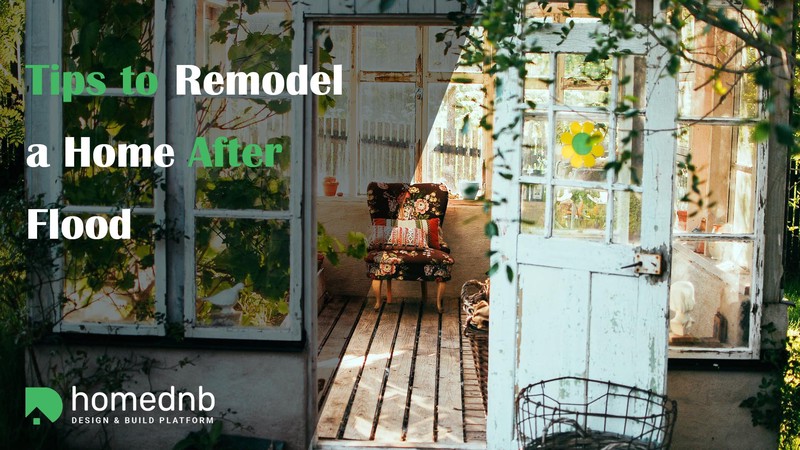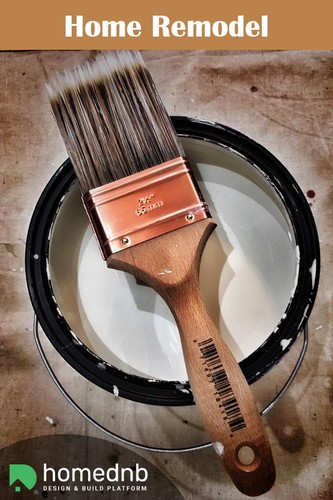
Overflowing rivers, storm surges, heavy rain, a damaged dam, ice melting quickly in the mountains, or even a breach can all cause flooding. But, regardless of the origin, when large volumes of water enter a home, the harm is nearly always cumulative. And the process of restoring a home is time-consuming, costly, and challenging. But with a home remodel you can get your home back and can make the changes that you have always wanted to make.
You might have taken pre-emptive measures to protect your home from flood, and you might have an alternate plan set up, in the event that a flood at any point hits your home. Whatever you’ve done to set up, this might be an unforeseen chance for you to roll out certain home renovations that you’ve been getting ready for some time. Subsequent to managing the underlying shock of water damage, and guaranteeing everybody in your home is protected, your fixes and rebuilding can start. Remember the accompanying supportive tips when remodel your home after a flood:
Make a Budget
A budget is essential for any home remodel project. Remodeling your house after a flood may be costly since basic improvements might become substantial. As a result, homeowners should conduct research and establish a fair budget based on the degree of water damage. For example, you should plan ahead of time to replace your tile counters with granite alternatives. When evaluating the expense, keep in mind that such remodels are intrusive to the structure of your home.
Hire a Reliable Professional
It is not a smart idea to restore your home after a flood on your own. As previously said, water penetrates through floors, walls, and ceilings, making rebuilding after water damage an intrusive procedure. Unseen moisture can cause rots and mold development, causing severe home damage and health hazards. As a result, it is essential to hire a reputable home remodeling firm to guarantee that floodwater is thoroughly removed.

Aside from adequately removing water from your house, you should engage restoration professionals for several other reasons. They clean and cure objects polluted by overflowing toilets and septic tanks and utilize modern technology to identify and dry concealed dampness. In addition, they correctly analyze the degree of property damage before proposing the type of repairs needed.
Replace Basement Floors
Water-related disasters are always hazardous to your flooring. After all, your carpets will absorb a lot of water, rendering it nearly useless. Keep in mind that you really can clean & dry it, but you’ll still need new carpet mats. Because your basement is below ground, it needs particular attention. You’ll need flooring materials that can withstand moisture better. However, you must do home remodel quickly since water may ruin even the most robust tiles if left for days.
Following a flood, the basement flooring and crawl space are the most damaged regions. They are also susceptible to significant water damage. For example, sponge-like carpets store a lot of water and take a long time to dry. It creates an ideal habitat for mould, mildew, and bacteria to thrive. Laminate and hardwood flooring, on the other hand, often retain moisture that harbors germs. Nonetheless, supplant the rug, wood, and overlay flooring with water-safe other options if your basement has been flooded with water. Vinyl, porcelain, artistic, treated cement, and elastic are the absolute best basement flooring choices to consider.
Renovate the Basement to Make It Better
Whenever it comes to water, the basements and underground areas are frequently problematic. In most situations, the ideal time for remodeling is after the property has been flooded. If you don’t know how to do it yourself, you may always hire a home remodel expert for basement remodeling. It would help if you went beyond simply repairing the basement flooring. Remodeling the whole basement after water damage helps to avoid mold and mildew growth on its walls. Start by removing any damaged materials, such as drywall and leaking pipes.
Basement reconstruction should emphasize the use of systems that prevent or resist water damage. Home renovation experts suggest adding submersible pumps, perimeter drainage tiles, and French drains to remove water out from the basements. You should also put vapor barriers on the walls to prevent moisture from penetrating them. While a window can help with ventilation, consider investing in an energy recovery ventilation system.
Strengthen Your Interior Walls
Water’s pollutants will most likely cause harm to your flooded house. After washing and deodorizing the frame, you’ll need to replace it with water-resistant materials. Avoid materials that absorb water like sponges, such as fiberglass wall insulation. However, extrusion polystyrene foam boards are compulsory for the insulation.
Upgrade your plasterboard with a cement board, which does not absorb any water. It implies that whenever the time arrives, you won’t have to be afraid of mold infiltrations. You may avoid using wood trim by using polyvinyl chloride founded panels for the skirting board. It guarantees that, even if your carpet becomes wet, your walls remain dry. To finish it off, apply weatherproof paint.

Repair The Windows and Outside Walls
After flooding, inspect your windows and external walls. These may be the most durable elements of your house, but that doesn’t mean they’re not vulnerable to harm. If the winds are strong enough, flying debris or tree limbs can cause significant damage. If you are living in the area where the storm occurs most, you must be more cautious in your selections. As replacements, hurricane-rated or wind-rated windows and doors are required. Always double-check your city code to make sure you’re following the regulations. Examine the outside of your home for evidence of major damage. Solid brick exteriors are among the strongest materials for resisting water and storm damage. Waterproof bricks should be used instead for further security.
If you don’t want to utilize bricks, look for wind-resistant materials. When hurricanes hit, vinyl siding and other comparable materials may be ripped off. Stucco is your greatest bet since it can survive harsh weather if properly maintained.
Strengthen the Kitchen and Bathroom
Bathrooms & kitchens are the primary foundations of humidity in your house under typical conditions. As a result, you should expect these areas to be badly damaged during floods, as the drains and plumbing fixtures on which these rooms rely may be ruined. It is also a good opportunity to restore and redecorate these spaces with the home remodel professional. For example, if your kitchen cabinets are buckling and old, use this time to install new ones. Modern styles may be used to update your backlash, as well as fresh coats of wall paint and granite or marble worktops.
Take Your Time to Do It Right
An essential thing to know is that any remodeling will require both time and money. Use high-quality materials since they will last for a longer length of time. As a result, your odds of needing to undertake these modifications in the future will be reduced. As always, avoid using water-absorbing items. Do this even if the appropriate materials are much more expensive. The peace of mind that comes with knowing you won’t have to worry about water damage is worth the price.
You must expect that calamities would fill local contractors with repair orders. Some individuals have to wait up to a year for their house to be restored. Your remodel may not be at the top of the list, but with patience and expertise, you may be able to complete these repairs on your own. If you want priority, be sure to contact local restoration specialists ahead of time. Do your homework and know which ones are appropriate for your region. It’s especially crucial if you reside in an area prone to natural catastrophes like hurricanes and storms.
It’s Simple to Repair Your Flooded Home!
Flood water may inflict irreparable damage to your home’s foundation, structure, and personal belongings. A flood can occur at any time, often with little to no notice, and floods are most prevalent during the spring season due to severe rainfall, fast snowmelt, and dam erosion.
While no one prepares for seasonal flood damage or home renovations in response to a weather catastrophe, it is sometimes unavoidable. Preparation is essential no matter how severe the crisis. When it comes to home improvements, never give up hope. Repairing your flooded house should include addressing any flaws that have previously existed. Take advantage of this opportunity to improve your home. As a result, the frequency of renovations will be reduced. After all, your home gets better suited to harsh weather and suffers less damage as a result. It should not be difficult to renovate your property after a flood. Begin by determining which areas deserve a full makeover and which only simple touch-ups. Then, you should invest in high-quality, weather-resistant materials and hire the proper specialists to do the remodeling.
If you need professional help to get back home with some modifications after a flood, you can contact homednb. It is a platform where we hire vetted home remodel contractors to help homeowners get their dream home!
Comments